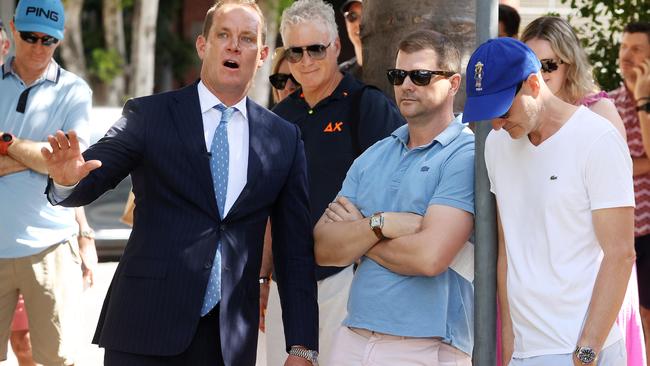Migration, shortfall lift house prices for now, but no big bounce
The fortunes of the housing market appear to be improving with the reopening of migration, but key forecasters have warned against expecting a big bounce.

Business
Don't miss out on the headlines from Business. Followed categories will be added to My News.
The fortunes of the housing market appear to be improving with the reopening of migration, but key forecasters have warned against expecting a big bounce.
HSBC is now forecasting muted housing price growth and lifted its expectations from a year-on-year fall of 6-8 per cent over 2023 to a fall of 1-3 per cent.
HSBC chief economist, Australia and NZ, Paul Bloxham, said that the reopened international border has driven a stronger-than-expected pick-up in inward migration.
This has boosted housing demand and is supporting a levelling out in housing prices earlier than previously forecast, and could mean some predictions of deeper falls do not come to pass.
“However, we do not expect a big bounce in prices, given the fixed rate mortgage resets and expected economic slowdown,” Mr Bloxham said.
The impending mortgage cliff and broader slow down in the economy are expected to weigh on the market, even though the rental crisis is spurring demand from both prospective buyers and investors.
National housing prices have declined by 10 per cent over the past year and have steadied in the past couple of months, with the HSBC economist saying that if this is the end of the downswing, it was a smaller and earlier peak-to-trough fall than expected.
Like many economic forecasters, the bank had earlier predicted a fall of around 15 per cent and stabilisation in the second half of 2023.
This had assumed that strong population growth would tighten the housing market and prevent a larger housing price fall.
“Population growth has been even stronger than we had factored in and the leading indicators of new construction have been weaker than expected,” Mr Bloxham said.
“This has seen rental vacancy rates fall to multi-decade lows, rents rise sharply, and is likely to be the key reason housing prices have stopped falling recently.”
But he cautioned that housing prices may be hit by the full effect of the monetary tightening in the economy and warned that increased mortgage stress may mean more forced property sales, putting more housing supply on what has been a tight market.
“The expected economic slowdown and rise in the unemployment rate could also weigh on housing demand,” he said.
”In addition, it usually takes interest rate cuts to deliver a big bounce in housing prices and we are forecasting a steady cash rate in 2023 and 2024.”
“The upward revision is mostly to the Sydney and Melbourne markets, which are benefiting more from stronger inward migration than elsewhere,” Mr Bloxham said.
But the cities have been down and, if at the bottom, would have registered peak-to-trough declines of 14 per cent for Sydney and 10 per cent for Melbourne over the past year or so.
AMP chief economist Shane Oliver said that from lows in February, average dwelling prices in the five biggest capital cities are up 1.3 per cent, led by Sydney which is up 2.6 per cent.
“This appears to reflect bargain hunters, first home buyers and investors stepping in after sharp falls, expectations that mortgage rates have peaked, the return of immigrants and low listings,” he said.
AMP’s base case remains for Australian home prices to fall further later this year as interest rate hikes impact and slower economic growth impact.
The Reserve Bank has estimated that 40 per cent of home borrowers have less than three months prepayment buffers and 15 per cent of variable rate borrowers will have negative cash flow by year end if the cash rate rises to 3.75 per cent.
“This all runs the risk of increased distressed sales, particularly as growth slows. But the rapid return of immigration, very low rental vacancy rates and constrained supply mean that our expectation for a top to bottom fall of 15-20 per cent may be too pessimistic and we may have already seen the low,” Dr Oliver said.
It comes as the RBA on Tuesday noted housing prices steadied in March following an 8 per cent decline from their peak a year ago, with it possible price falls could stabilise earlier than expected and at a level above the previously forecast trough.
CBA’s head of Australian economics, Gareth Aird, agreed with the RBA’s assessment that “there were already signs that the recent fall in housing prices might be smaller and more short-lived than expected”.
“We ... will be revisiting our home price forecasts over coming weeks – we had expected a peak to trough fall in home prices of about 15 per cent,” he said.
But he said the timing of another rate hike was not certain.
“Indeed another rate hike is not guaranteed and it is very plausible that the current cash rate of 3.6 per cent is the peak in this cycle,” he said.
Originally published as Migration, shortfall lift house prices for now, but no big bounce




